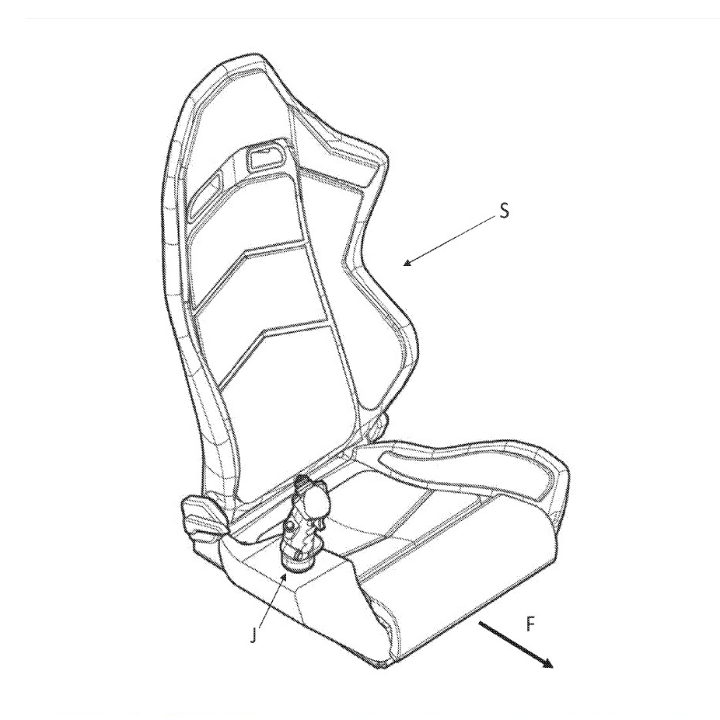Does Ferrari joystick patent suggest supercars without steering wheels are on the way?
Will this new steering idea stick with Ferrari drivers?
FERRARI is looking to reinvent the steering wheel with its future supercars and grand tourers, if a recent patent is anything to go by.
The Maranello-based car maker has designed an all-new way to control its high-performance production vehicles, according to the document, published by the United States Patent Office. Instead of using the tried-and-tested steering wheel, Ferrari’s plans involve a fighter jet-style joystick control attached to the driver’s seat.
The aircraft-derived control isn’t for a new range of flying cars but what Ferrari calls a “simpler and more intuitive” control method for vehicles based on terra firma.
A car controlled with a stick instead of a wheel will be especially beneficial on highways and the motorway, according to the patent, “thus limiting the active intervention of the driver as much as possible.”
The patent doesn’t go into great detail on how such a system will work, though in one scenario outlined, when the driver lets go of the joystick, the steered wheels automatically realign in the straight-ahead position. In the other variant of the system, the joystick doesn’t self-centre when the driver lets go, meaning the car will continue on its current course unless the driver intervenes.
As explained in the patent summary, controlling the car’s speed and direction of travel can work in similar principles. One of the two “preferred variant” solutions sees the vehicle’s speed dictated by how far forward the stick is pulled back or pushed forward; for example, if the Ferrari were to have a top speed of 200mph, pushing the joystick halfway forward would mean it would travel at around 100mph.
In the other system, which isn’t too dissimilar to how throttle and brake pedals in your own car works, the rate of acceleration and deceleration is determined by the angle of the joystick. For example, a shallow angle will slowly speed the car up or slow it down, and a maximum angle is the equivalent is flooring the throttle or slamming on the brakes as if you were doing an emergency stop.
Regardless of how the system will work if Ferrari ever decides to put it into a production car, the joystick array has supposedly been designed to work with a variety of powertrains, from conventional combustion engines to pure-electric and hybrid setups. Considering Ferrari makes repeated references to the joystick systems’s regenerative braking potential, it’s more likely than not any car that Ferrari fitted with a seat-mounted stick in place of a steering wheel would be a hybrid or pure-electric vehicle.
If Ferrari’s previous history with unconventional patent technologies is anything to go by, however, it’s unclear if this will ever see the light of day as a real device. In 2014, the prancing horse filed a patent for a two-cylinder petrol engine that, at the time, fuelled speculation the company could have been considering a foray into motorcycles. So far that hasn’t come to fruition.
Joystick controls for cars are nothing new. The 1954 Ford FX Atmos concept featured one, as did Mercedes’s F200 Imagination concept of 1996 and Saab’s Prometheus concept in 1993. However, no production car has done away with the tried and tested steering wheel since it replaced tillers as the primary way to control the wheels, in the very early days of motoring.
And Ferrari’s joystick is only the latest of many far-fetched ideas for which car makers file patents, just in case it later turns out to be a real game-changer. In 2015, Jaguar Land Rover filed a patent for eye-operated windscreen wipers, and a Toyota patent from 2019 showed the company had devised a tear gas dispenser to deter wannabe car crooks.
Tweet to @J_S_Allen Follow @J_S_Allen
Jeremy Clarkson: The Ferrari 488 Pista is so good I might actually buy one
Jaguar Land Rover patent clears way for eye-activated rear wipers





